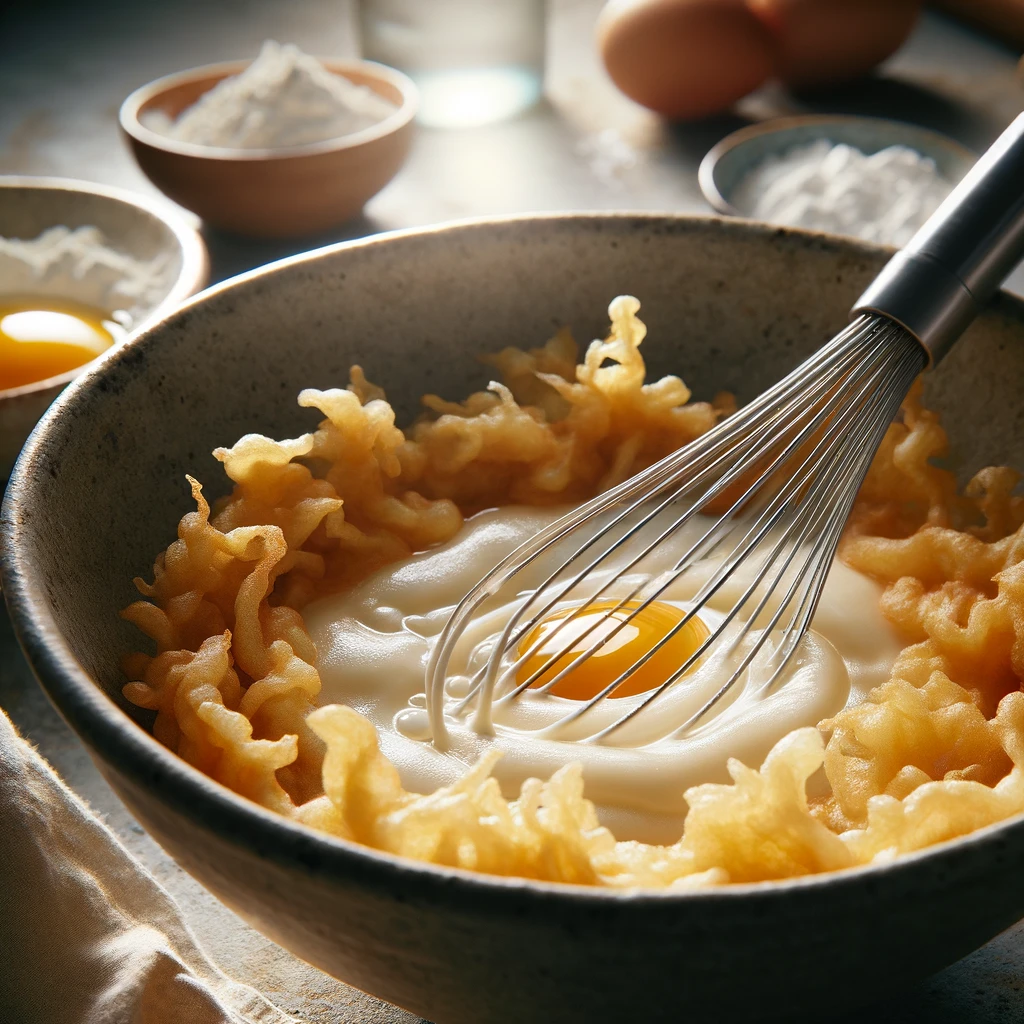Introduction
Tempura is a beloved Japanese dish known for its light, crispy texture and delicate flavor. Central to achieving this culinary delight is the tempura batter, a simple yet precise mixture that coats and transforms ingredients into golden, crunchy morsels. Whether you’re a seasoned chef or a home cook looking to elevate your frying game, understanding the nuances of tempura batter is essential. This article delves into everything you need to know about tempura batter, from its basic components to expert tips for achieving the perfect crispiness. Plus, we’ll answer some frequently asked questions to enhance your tempura-making journey.
What is Tempura Batter Made Of?
Tempura batter is renowned for its minimalistic approach, typically consisting of cold water, wheat flour, and sometimes egg. The cold water is crucial as it prevents the flour from absorbing too much oil, ensuring a light and airy texture. For an even lighter batter, some chefs incorporate carbonated water or ice cubes to keep the mixture cold.
Ingredients:
- Cold water (preferably ice-cold)
- Wheat flour (all-purpose flour is commonly used)
- Egg (optional, but adds richness)
The Difference Between Batter and Tempura Batter
While the term “batter” refers to any mixture of liquid and flour used as a coating for frying, tempura batter stands out for its emphasis on lightness and crispiness. Unlike other batters that may include milk, baking powder, or different types of flour for leavening and flavor, tempura batter relies on the simplicity of its ingredients and the coldness of the water to achieve its distinctive texture.
Key Differences:
- Ingredients: Tempura batter uses fewer ingredients, often omitting milk and baking powder.
- Texture: Tempura batter aims for a lighter, crispier texture compared to more traditional batters.
Is Tempura Vegetarian?
Yes, tempura can be vegetarian. The basic tempura batter is made from water, flour, and optionally egg, making it suitable for vegetarians. However, the choice of fillings is crucial; vegetables and vegetarian-friendly ingredients ensure the dish remains vegetarian.
The Secret to Perfect Tempura
Achieving the perfect tempura lies in the batter’s temperature and consistency. The batter should be cold and mixed gently until just combined, with some lumps remaining. Overmixing can develop gluten, leading to a heavy and greasy outcome. Additionally, frying at the correct temperature (around 340-360°F or 170-180°C) ensures a quick cook time, preventing oil absorption and retaining the ingredient’s moisture.
Expert Tips:
- Use ice-cold water to keep the batter cold.
- Mix the batter lightly and keep it lumpy.
- Maintain the oil at the right temperature for frying.
- Fry in small batches to avoid dropping the oil’s temperature.
How Do I Use Tempura Batter?
Using tempura batter is straightforward. Dip your choice of ingredients—seafood, vegetables, or even fruit—into the batter, ensuring a thin, even coating. Then, gently lay the coated items into hot oil and fry until they are golden and crispy. Drain on paper towels to remove excess oil before serving.
Can I Make Tempura Batter Egg-Free?
Absolutely! For an egg-free tempura batter, simply omit the egg and ensure your water is ice-cold to maintain the batter’s lightness and crispiness. This modification makes the batter vegan-friendly as well.
FAQs
What is tempura batter made of?
Tempura batter is a simple mixture of cold water, wheat flour, and optionally egg. The key to its light texture is the use of ice-cold water.
What is the difference between batter and tempura batter?
The main difference lies in the ingredients and texture. Tempura batter is lighter and crispier, often made with just water, flour, and sometimes egg, without the leavening agents found in other batters.
Is tempura vegetarian?
Yes, tempura can be vegetarian, depending on the fillings used. The basic batter is suitable for vegetarians, and using vegetable fillings makes the dish vegetarian.
What is the secret to perfect tempura?
The secret lies in the batter’s temperature and mixing technique. Use ice-cold water, mix until just combined and lumpy, and fry at the correct temperature.
How do I use tempura batter?
Dip your ingredients into the batter for a thin coating, then fry in hot oil until golden and crispy. Drain on paper towels before serving.
Can I make tempura batter egg-free?
Yes, you can make egg-free tempura batter by omitting the egg and ensuring the water is ice-cold, making it vegan-friendly as well.
Now that you’re armed with the knowledge and tips for creating the perfect tempura batter, it’s time to put your skills to the test and enjoy the delicate crunch and flavor
